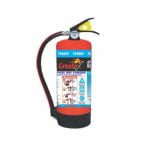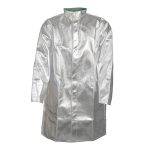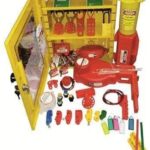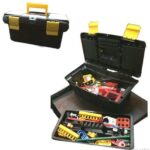Your list is empty, add products to the list to send a request
Which Rooms Should Have Smoke Detectors? A Complete Room-by-Room Fire Safety Guide

27
May
Smoke detectors are essential for early fire detection and lifesaving alerts. But simply owning a smoke detector isn’t enough—you need to place them in the right rooms for maximum protection.
In this comprehensive guide, we’ll answer the crucial question: which rooms should have smoke detectors? Backed by fire safety codes and expert recommendations, this blog provides everything you need to know to keep your home or workplace safe.
Why Smoke Detector Placement by Room Matters
Fires can start in any part of a home or building, and early detection is key to survival. Installing smoke detectors in strategic rooms ensures a faster response time.
According to the National Fire Protection Association (NFPA), working smoke alarms cut the risk of dying in a home fire by more than 50%.
Essential Rooms That Must Have Smoke Detectors
1. Bedrooms
Sleeping people are less likely to notice fire-related cues like smell or heat. Place a smoke detector on the ceiling or high on the wall inside each bedroom.
2. Hallways Outside Sleeping Areas
Install one smoke detector in every hallway leading to bedrooms. For multiple rooms connected by a corridor, one centrally located detector is usually sufficient.
3. Living Room or Family Room
These high-activity spaces often contain electronics, heaters, and electrical cords—common fire starters. Install a detector in or near these areas.
4. Basements
Basements often house appliances like water heaters, furnaces, or washing machines. Install a smoke alarm on the ceiling at the bottom of the stairs.
5. Attics (if finished or used)
If your attic is used as a living or storage space, it should have a smoke detector. Be cautious of extreme temperatures that may affect performance.
Optional but Recommended Rooms for Smoke Detectors
6. Home Offices
With computers, printers, and other electronics, these rooms present a fire risk. Install a smoke detector if this space is frequently used.
7. Dining Rooms
Although less likely to be a source of fire, placing a smoke detector nearby can provide an added layer of security.
8. Utility Rooms
Rooms housing HVAC units, boilers, or electrical panels should be monitored with a nearby smoke alarm.
Rooms Where Smoke Detectors Should Be Avoided
Some rooms may trigger false alarms or affect the detector’s performance. Avoid placing detectors in:
- Kitchens (use a heat detector instead)
- Bathrooms (steam causes false alarms)
- Garages (vehicle fumes and dust interfere with sensors)
Place detectors just outside these areas instead.
Optimal Placement Within Rooms
To ensure maximum effectiveness:
- Install on the ceiling, at least 4 inches away from walls
- If mounted on a wall, place 4–12 inches below the ceiling
- Keep detectors away from vents, fans, and windows
- Avoid placing in corners or near dead air space
Should You Put a Smoke Detector in Every Room?
While not every room needs a smoke detector, many should have one. Prioritize bedrooms, living spaces, and any room with electrical appliances.
Area Coverage: How Much Space Does One Smoke Detector Cover?
On average, one smoke detector can cover around 500 square feet. However, factors such as ceiling height, room layout, and airflow can affect coverage.
For large open spaces or oddly shaped rooms, consider installing multiple detectors or using addressable systems like the Ravel Conventional Smoke Detector.
Commercial Spaces: Room-Specific Detector Placement
For businesses, follow strict regulations:
- Offices: Install in every individual room and hallway
- Meeting Rooms: Especially those with projectors or heating systems
- Server Rooms: Use both smoke and heat detectors
- Storage Areas: Monitor for combustible materials
Systems like the Ravel Conventional Smoke Detector are ideal for commercial and industrial applications.
Maintenance Tips for Room-Specific Detectors
To keep detectors effective:
- Test monthly with the built-in button
- Replace batteries every 6 months (or use 10-year sealed batteries)
- Clean with a vacuum or dry cloth every 3 months
- Replace detectors every 8–10 years
Keep a fire safety checklist for each room.
Conclusion: Maximize Safety by Knowing Where to Install
Every room serves a different purpose—and poses different fire risks. Install smoke detectors in key rooms such as bedrooms, hallways, basements, and living areas to maximize safety.
For professional-grade protection, consider the Ravel Conventional Smoke Detector. It’s ideal for both residential and commercial spaces.
FAQs
1. Where are smoke detectors placed in rooms?
They are typically installed on the ceiling, at least 4 inches away from the nearest wall. If on a wall, mount 4–12 inches from the ceiling. Avoid vents, windows, and fans.
2. What is the area covered by smoke detectors?
One smoke detector usually covers about 500 sq. ft. For larger or irregularly shaped rooms, additional units may be needed.
3. Should you put a smoke detector in every room?
Not every room, but essential spaces like bedrooms, hallways, living rooms, and basements must have detectors. Avoid areas like kitchens and bathrooms to reduce false alarms.
Take control of your fire safety today.
Explore the Smoke Detector to protect your home or office with confidence.



























